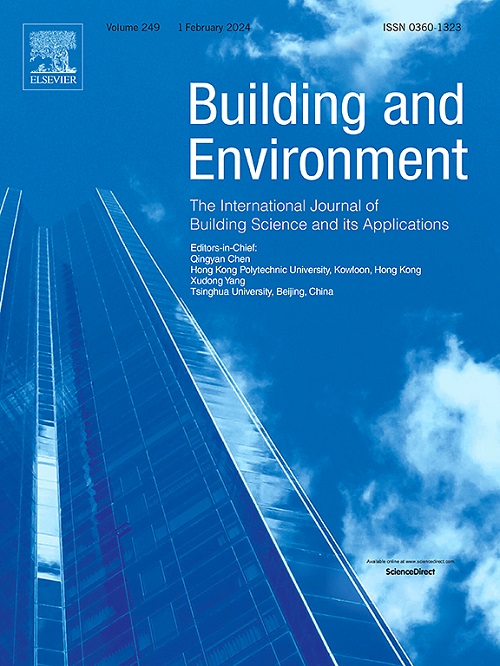儿童是否面临更大的户外高温风险?不同城市土地覆盖下行人尺度垂直热环境的比较研究
IF 7.1
1区 工程技术
Q1 CONSTRUCTION & BUILDING TECHNOLOGY
引用次数: 0
摘要
准确测量和评估不同城市土地覆盖(ULCs)的行人尺度热环境对于减少室外热风险和促进有针对性的城市热环境改善至关重要。然而,大多数关于ULCs对室外热舒适(OTC)影响的研究都集中在1.5 m的单一标准高度上,忽略了垂直方向上热环境的差异和变化。因此,迫切需要开展行人尺度的垂直热环境观测,以评估不同高度人群的热风险差异,特别是身高较低的儿童在不同的ULCs上是否面临更大的热风险。在此基础上,本研究选取了5个典型的ULCs,采用固定垂直测量方法,调查分析了行人尺度垂直热环境(0.3 m ~ 1.5 m范围内的地表温度(Ts)和小气候)中ULCs的变化与差异。结果表明:白天,浓密森林对垂直热环境的改善效果最好,而夜间,草坪和稀疏森林对垂直热环境的改善效果最好;在OTC方面,儿童普遍比成人面临更大的室外热风险,并且在某些ULCs下,儿童蹲坐时的热风险比站立时更大,特别是在不透水的路面和合成橡胶上。因此,儿童OTC应给予特别的重视。此外,1.5米的测量可能会高估或低估成人的实际热风险,因此在准确的高度进行测量对于评估OTC至关重要。本文章由计算机程序翻译,如有差异,请以英文原文为准。
Do children face greater outdoor heat risks? A comparative study of pedestrian-scale vertical thermal environment on different urban land covers
Accurate measurement and assessment of pedestrian-scale thermal environments on different urban land covers (ULCs) is crucial for reducing outdoor heat risks and facilitating targeted improvements in urban thermal environments. However, most studies on the impact of ULCs on outdoor thermal comfort (OTC) focus on a single standard height of 1.5 m, ignoring differences and variations of the thermal environment in the vertical direction. Therefore, it is urgent to conduct pedestrian-scale vertical thermal environment observations, so as to evaluate the difference of heat risk among people at different heights, especially whether children with lower height face greater heat risks on different ULCs. Based on this, 5 typical ULCs were selected in this study, and the changes and differences of ULCs in the pedestrian-scale vertical thermal environment (surface temperature (Ts) and microclimate between 0.3 m and 1.5 m) were investigated and analyzed using the fixed vertical measurement method. The results showed that the dense forest provided the best improvement to the vertical thermal environment during the day, while the lawn and the sparse forest performed best at night. In terms of OTC, children generally faced greater outdoor heat risks than adults, and under certain ULCs, the heat risk for children was greater when squatting compared to standing, particularly on the impervious pavement and the synthetic rubber. Therefore, children's OTC should be given particular attention. Moreover, measurements at 1.5 m may overestimate or underestimate the adults' actual heat risks, so taking measurements at an accurate height is essential for evaluating OTC.
求助全文
通过发布文献求助,成功后即可免费获取论文全文。
去求助
来源期刊

Building and Environment
工程技术-工程:环境
CiteScore
12.50
自引率
23.00%
发文量
1130
审稿时长
27 days
期刊介绍:
Building and Environment, an international journal, is dedicated to publishing original research papers, comprehensive review articles, editorials, and short communications in the fields of building science, urban physics, and human interaction with the indoor and outdoor built environment. The journal emphasizes innovative technologies and knowledge verified through measurement and analysis. It covers environmental performance across various spatial scales, from cities and communities to buildings and systems, fostering collaborative, multi-disciplinary research with broader significance.
 求助内容:
求助内容: 应助结果提醒方式:
应助结果提醒方式:


